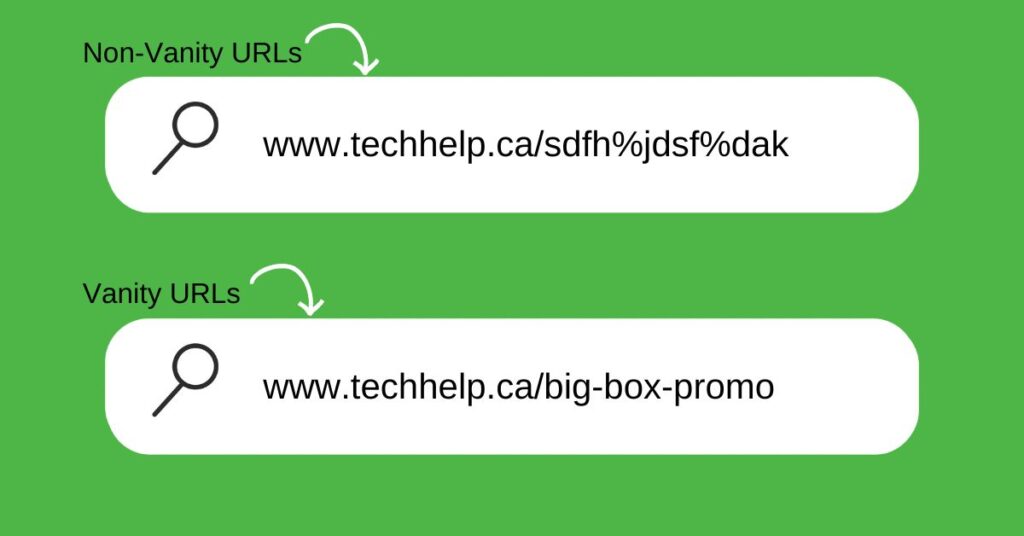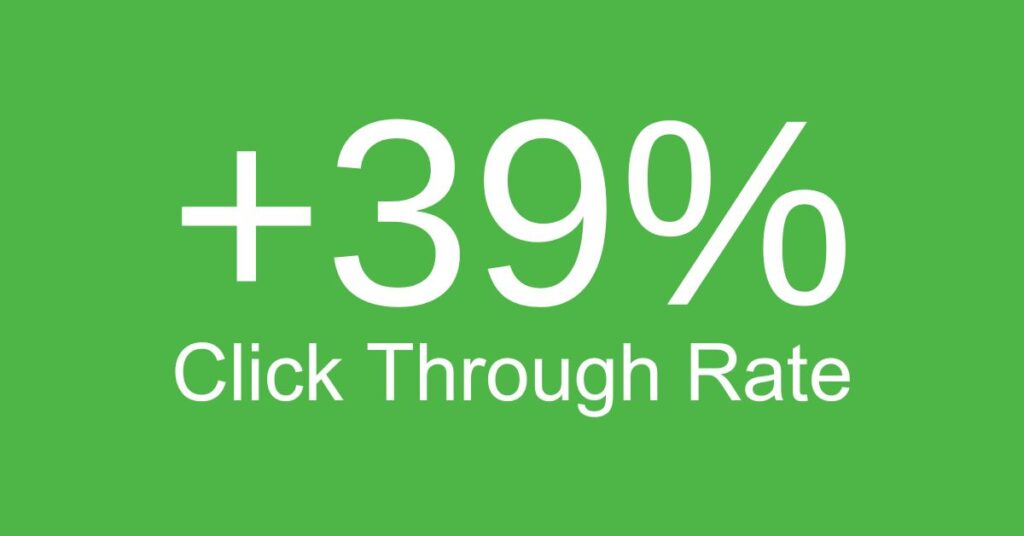Among the arsenal of tools widely used in the fiercely competitive world of digital marketing, one often overlooked gem stands out: the vanity URL.
Vanity URLs are customized web addresses that are short, memorable, and often brand-specific. Far from being a mere cosmetic enhancement, they serve as a strategic asset for enhancing user experience, improving SEO, and increasing brand recognition.
Here, we’ll take a detailed look at vanity URLs, why they matter, and how to create them effectively.
What Are Vanity URLs?

A vanity URL is a clean, easy-to-remember web address that usually includes a brand name or relevant keywords. For instance, instead of a complex URL like https://example.com/page123?item=456, a vanity URL might be https://example.com/product.
This simplification makes the URL not only aesthetically pleasing but also more professional and user-friendly.
Benefits of Vanity URLs
These benefits can strengthen your brand’s online presence.
Increased Click-Through Rates
Vanity URLs can significantly boost click-through rates by inspiring trust and confidence. Users are more likely to click on a URL that clearly indicates where it will lead.
Studies show that click-through rates can increase by as much as 39% when users are presented with a vanity URL instead of a long, complex one.
This boost is particularly crucial in paid advertising campaigns, where every click directly impacts your return on investment.

Source: Rebrandly, https://support.rebrandly.com/hc/en-us/articles/115007615288-Generic-Short-URLs-vs-Branded-Links-Which-Has-Better-CTR
SEO Advantages
Incorporating relevant keywords in your vanity URL can substantial lift outcomes from your search engine optimization (SEO) efforts. Research indicates that shorter URLs tend to rank higher in search engine results pages (SERPs).
In fact, URLs ranking in the top positions on Google are typically about ten characters shorter than those in lower positions. Also, keywords in the URL signal to search engines what the page is about, potentially improving its relevance for related searches.
Branding and Memorability
A well-crafted vanity URL serves as a powerful branding tool, enhancing your brand’s visibility and memorability. You are making it easier for users to recall and share by incorporating your brand name or relevant keywords into the URL.
For instance, https://brandname.com/sale is much more likely to stick in a customer’s mind than https://brandname.com/page?id=12345. This simplicity can lead to improved brand recognition and increased word-of-mouth marketing.
Enhanced Trust
In this age where online security is a major concern, the appearance of your URL matters more than ever. Users are often wary of long, complicated URLs that might lead to suspicious or malicious sites.
A clean, professional-looking vanity URL reassures users they are visiting a trustworthy page. This trust factor is crucial, especially when users are making purchases or providing personal information.
A vanity URL like https://brandname.com/secure-checkout can significantly reduce user hesitation compared to a more complex URL.
Better Tracking
Vanity URLs simplify the process of tracking marketing campaign performance. By using different ones for various campaigns or platforms, you can quickly and easily see where your traffic is coming from. This granular tracking helps refine your marketing strategies and allocate resources more effectively.
For example, you could use https://brandname.com/summer-facebook for a Facebook campaign and https://brandname.com/summer-instagram for an Instagram campaign. This allows you to compare the performance of each platform directly.
Seasonal Relevance
Boost engagement by creating timely, season-specific URLs. For example, https://brandname.com/summer-splash for a summer promotion or https://brandname.com/cyber-monday for holiday deals.
This approach adds a sense of urgency and relevance to your URLs, potentially increasing click-through rates during specific periods.
Localization
For businesses targeting multiple regions or countries, consider creating localized vanity URLs. For instance, https://brandname.com/uk-shop for UK customers or https://brandname.com/de-angebote for German deals.
This strategy can improve local SEO and create a more personalized experience for users in different markets.
Creating Effective Vanity URLs
Below are essential tips for creating effective URLs to boost your brand:
Keep It Short and Simple
Brevity is key when creating vanity URLs. Aim for clarity and avoid unnecessary words or characters. Instead of https://brandname.com/page123?item=456, opt for https://brandname.com/product.
Shorter URLs are easier to remember, look cleaner, and more professional. The goal is to create a URL that decreases the cognitive load on users, making it effortless for them to understand and recall.
Include Keywords
Use relevant keywords that describe the page’s content or purpose. This helps with SEO and makes the URL more understandable for users.
For example, a URL like https://brandname.com/seo-tips immediately informs users about the content they can expect to find, improving search engine rankings and user experience.
Ensure Brand Consistency
Your vanity URLs should align with your brand’s voice and style. Consistency in your URL structure reinforces brand identity and makes it easier for users to recognize and trust your links.
If your brand is known for its playful and casual tone, your URLs could reflect that. For example, a fun clothing brand might use https://brandname.com/awesome-tees instead of the more formal https://brandname.com/t-shirt-collection.
Avoid Special Characters
Stick to letters and numbers when creating vanity URLs. Special characters can complicate the URL and make it harder to remember. Avoiding special characters also reduces the risk of technical issues arising from their use.
A clean URL like https://brandname.com/new-products is preferable to one with special characters like https://brandname.com/new-products!@#.
Use URL Shortening Tools
Tools like Bitly, TinyURL, or Rebrandly can help create and manage vanity URLs. These tools allow you to customize URLs and often provide analytics to track performance. Using these tools, you can create shorter, branded links that are much easier to share and track.
For example, Bitly allows you to shorten a long URL and customize it to something more relevant, like https://bit.ly/brandname-promo.
Best Practices for Vanity URLs
These are the best practices for crafting URLs that enhance your brand’s visibility.
1. Consistency
Maintain a consistent structure across your vanity URLs to create a professional and organized appearance. Consistent URL structures help both users and search engines understand the organization of your content.
For instance, if you use https://brandname.com/category/product for one product, apply a similar structure for all products within that category.
2. Relevance
Ensure your vanity URL accurately represents the page’s content. A relevant URL helps users understand what to expect and improves the likelihood of clicks and engagement.
For example, a URL like https://brandname.com/summer-sale is more appropriate and engaging than a generic URL like https://brandname.com/event.
3. Call to Action
Consider incorporating a call to action in your vanity URL when appropriate. A URL like https://brandname.com/join-now not only makes the link more engaging but also encourages immediate user action. This approach can potentially increase conversion rates by giving users a clear and immediate incentive to click.
4. A/BTesting
Don’t settle for the first vanity URL that comes to mind. Implement A/B testing to determine which URLs resonate best with your audience.
Create two versions for the same campaign (e.g., https://brandname.com/special-offer vs. https://brandname.com/exclusive-deal) and track which performs better. Use these insights to refine your URL strategy over time.
5. Future-Proofing
When creating vanity URLs, consider their longevity. Avoid using dates or trendy terms that may quickly become outdated. Instead, opt for timeless phrases that will remain relevant.
For example, https://brandname.com/loyalty-rewards is more future-proof than https://brandname.com/2023-points-program. This approach ensures your vanity URLs remain valuable assets for years to come.
The Takeaway
Vanity URLs are a small yet powerful strategy in your digital marketing toolkit. They enhance user experience, improve SEO, build trust, and make tracking easier. Following best practices and leveraging the benefits of this type of URL can significantly boost your online presence and drive more website traffic.Whether running a marketing campaign, enhancing your SEO strategy, or simply improving user experience, vanity URLs can have a meaningful impact on your digital success.
We empower people to succeed through practical business information and essential services. If you’re looking for help with SEO, copywriting, or getting your online presence set up properly, you’re in the right place. If this piece helped, feel free to share it with someone who’d get value from it. Do you need help with something? Contact Us
Want a heads-up once a week whenever a new article drops?







